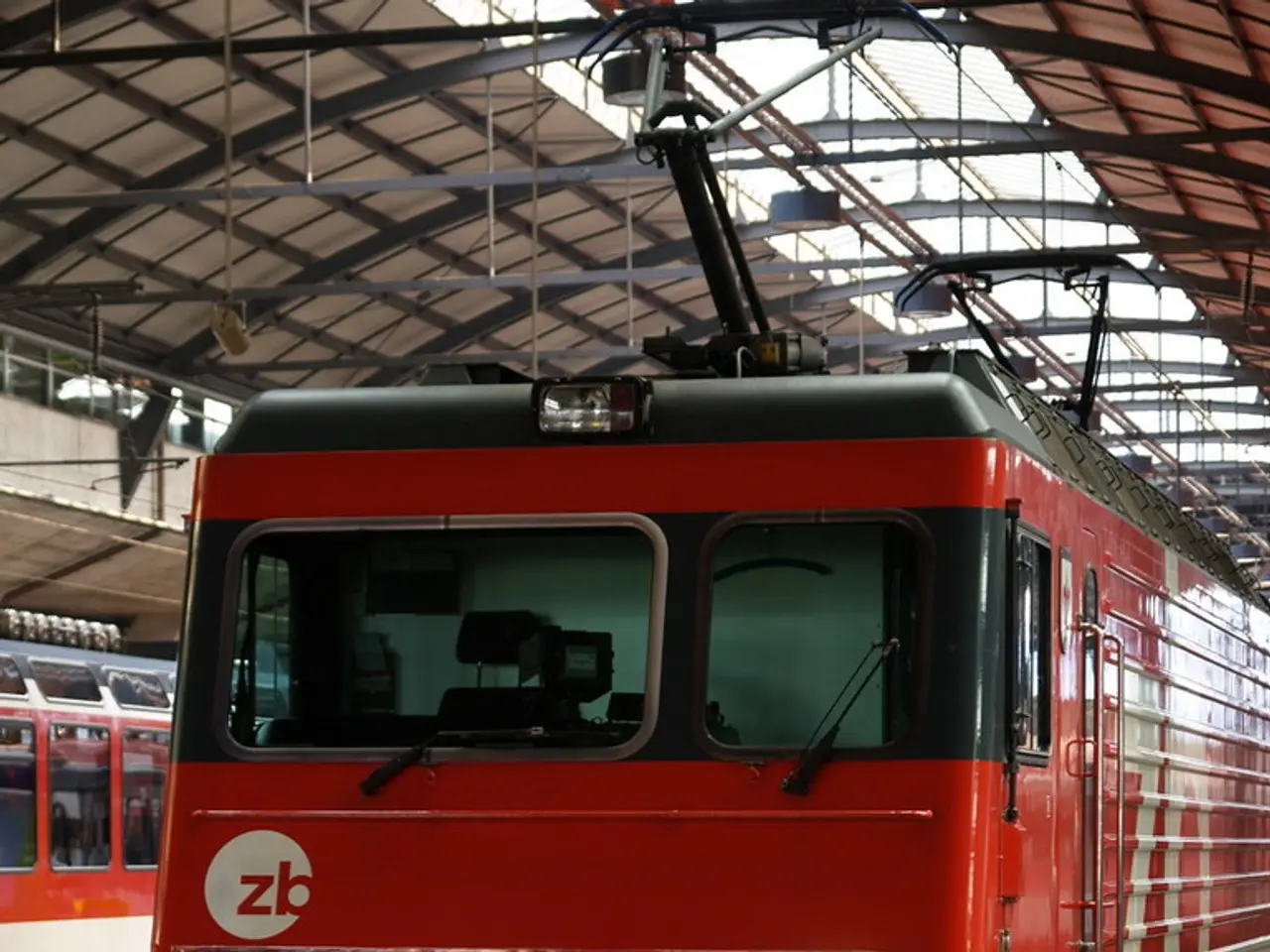Rail transportation in Britain marks its 200th anniversary
The Stockton and Darlington Railway (SD&R), inaugurated on September 27, 1825, marked a significant milestone in history as the world's first public railway to use steam locomotives. This groundbreaking railway connected the port of Stockton-on-Tees with coalfields around Darlington, revolutionising industrial transport[1][2].
The need for an efficient means of transporting coal from the Bishop Auckland coalfield to Stockton's port led to the creation of the SD&R. Earlier proposals for canals were deemed too costly, so a steam-powered railway was developed instead, under the leadership of George Stephenson, who designed the pioneering locomotives used on this line[1].
The SD&R played a pivotal role in North England's industrial growth by improving coal transportation, which was essential for powering factories and heating cities. The railway's success demonstrated the viability of steam locomotives, catalysing railway development across Britain and worldwide[1][2].
Today, the railway has become a cultural and historical landmark, attracting train enthusiasts, families, and "Harry Potter" fans. The North Yorkshire Moors Railway, which starts from Pickering, offers scenic steam train rides and passes through Goathland station, which was used in the first "Harry Potter" film[5]. The station in the movie is named Hogsmeade.
The railway has also fostered a lasting tourism legacy in the region. The Tanfield Railway, the world's oldest operating railway (dating to 1725), showcases the area's rich railway heritage and attracts visitors interested in industrial history and steam locomotives[4].
The SD&R's impact extends beyond transportation. The Cole Drops, built in the 1840s, were precursors to modern service stations for loading coal, while Thomas Cook invented the package tour in 1841, laying the foundation for mass tourism[6].
The Mansion's Arm Inn, located in Shildon, was the world's first railway pub, opening in 1825, and the Hopetown Museum, housed in the original North Road Station from 1842, is the world's oldest railway station building[7]. The Bishop Line, which runs between Shildon and Darlington, partly along the old trackbed, continues to carry passengers today.
The Skerne Bridge in Darlington, built in 1825, is the world's oldest railway bridge still in use, and Shildon, once a sleepy town, grew significantly, becoming the largest marshalling yard in the United Kingdom around 1890[3].
As Britain celebrates 200 years of train travel since 1825, the ride on the North Yorkshire Moors Railway has a festive touch, with the jubilee celebration adding an extra charm to the journey[8]. The iconic steam locomotive "Bahamas," from 1934, is one of the many historic engines that operate on this line, keeping alive the spirit of the SD&R and the golden age of rail travel.
References: 1. BBC - History - The Stockton and Darlington Railway 2. National Railway Museum - The Stockton and Darlington Railway 3. Britannica - Stockton and Darlington Railway 4. Visit Durham - Tanfield Railway 5. North Yorkshire Moors Railway - Harry Potter 6. Thomas Cook - History 7. British Listed Buildings - Mansion's Arm Inn 8. North Yorkshire Moors Railway - Special Events
The emergence of steam railways, pioneered by the Stockton and Darlington Railway (SD&R), revolutionized not only transportation but also various aspects of lifestyle, including the home-and-garden sector as the mass transportation of goods became more accessible.In the realm of travel, the success of the SD&R paved the way for the growth of mass tourism, with Thomas Cook's invention of the package tour marked in 1841, demonstrating the impact of early railways on leisure activities worldwide.*




